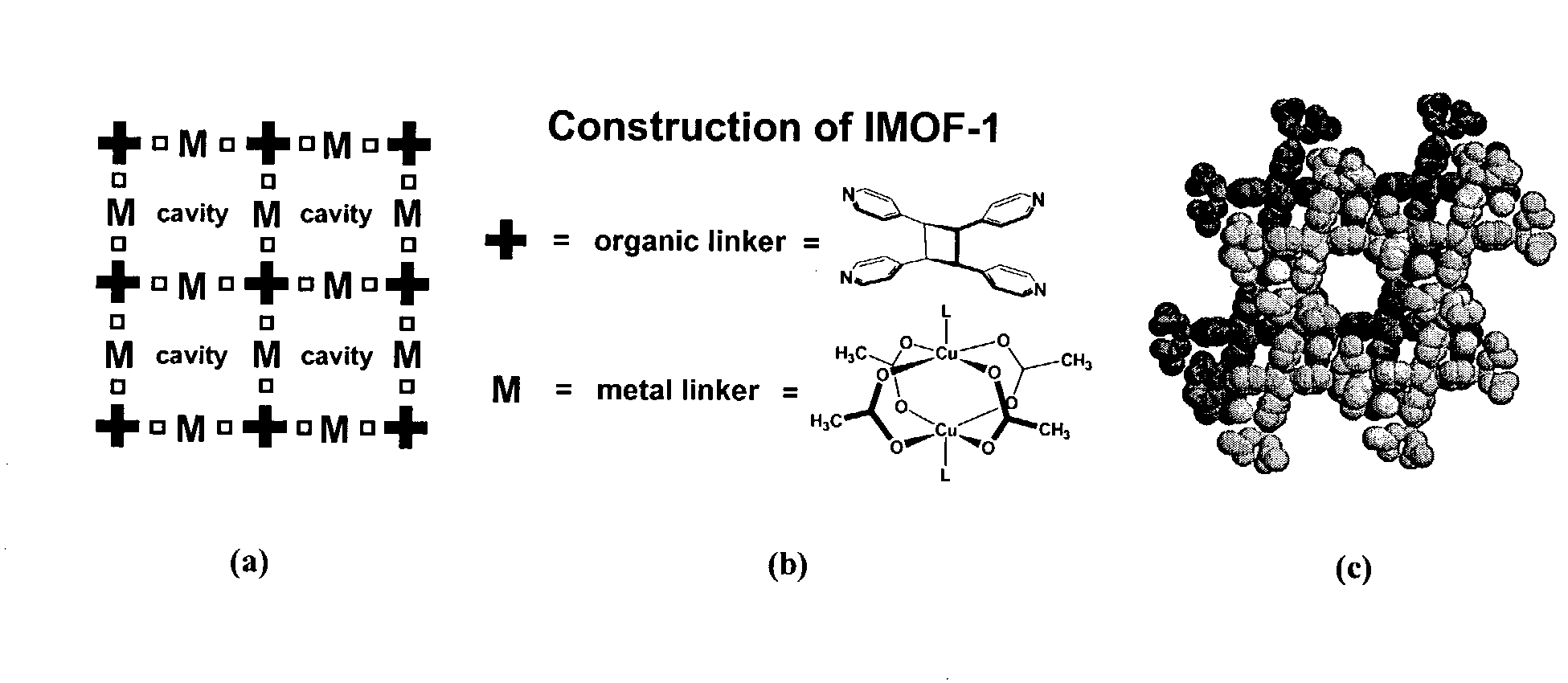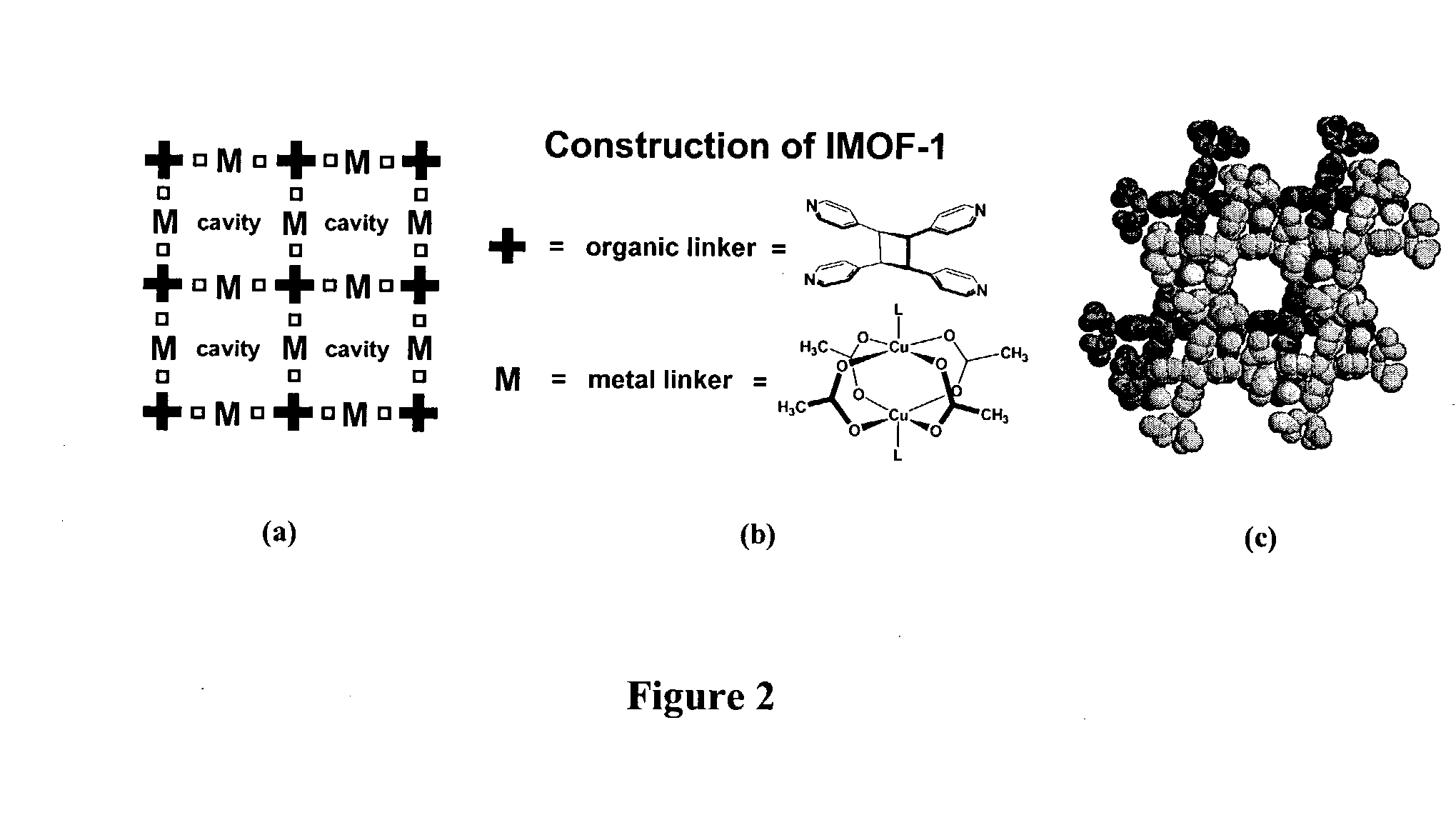Gas storage materials and devices
a technology of gas storage materials and materials, applied in the direction of machines/engines, other chemical processes, separation processes, etc., can solve the problems of inability to meet the needs of industrial production,
- Summary
- Abstract
- Description
- Claims
- Application Information
AI Technical Summary
Benefits of technology
Problems solved by technology
Method used
Image
Examples
example 1
Introduction
[0045]Below, we describe the results of a strategy for the construction of such a porous IMOF that employs a molecule derived from a template-directed (L. R. MacGillivray, Cryst. Eng. Commun. 2002, 7, 1-5; G. S. Papaefstathiou, et al., Chem. Commun. 2001, 2462-2463; L. R. MacGillivray, et al., J. Am. Chem. Soc. 2000, 122, 7817-7818) solid-state [2+2] photodimerization (G. M. J Schmidt, Pure Appl. Chem. 1971, 27, 647-678) as the node (FIG. 2). Owing to the presence of divergent and multiple Lewis-base functionality, we anticipated that the product of this solid-state approach, rett-tetrakis (4-pyridyl)cyclobutane) (4,4′-tpcb) (A. J. Blake, et al., Chem. Commun. 1997, 1675-1676, upon reaction with the Cu-paddle-wheel complex [Cu2(O2CR)4L2] would serve as a 4-connected node, propagating the dimetal complex, as a linear SBU through axial coordination, within a porous 2D IMOF. (For studies involving paddle-wheel complexes as linear bridges in extended frameworks, see: B. Moul...
example 2
Compound 2•2-benzene
[0053]Using a procedure similar to that described in Example 1, except replacing the [Cu(O2CCH3)2(H2O)2] used therein with [Cu(O2CC(CH3)═CH2)2(H2O)2], a framework of the invention (Compound 2•2-benzene) was prepared. The framework was characterized by X-ray crystallographic analysis and found to have cavities of approximately 17.2×17.2×5.0 Å, with the unsaturated acrylate bonds directed into the cavities.
PUM
| Property | Measurement | Unit |
|---|---|---|
| volume | aaaaa | aaaaa |
| volume | aaaaa | aaaaa |
| volume | aaaaa | aaaaa |
Abstract
Description
Claims
Application Information
 Login to View More
Login to View More - R&D
- Intellectual Property
- Life Sciences
- Materials
- Tech Scout
- Unparalleled Data Quality
- Higher Quality Content
- 60% Fewer Hallucinations
Browse by: Latest US Patents, China's latest patents, Technical Efficacy Thesaurus, Application Domain, Technology Topic, Popular Technical Reports.
© 2025 PatSnap. All rights reserved.Legal|Privacy policy|Modern Slavery Act Transparency Statement|Sitemap|About US| Contact US: help@patsnap.com



